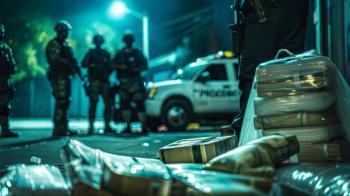
New Instrument Development in Spectroscopy
During the Analytica conference in Munich, Germany experts from industry and academia discussed the latest trends in spectroscopy instrumentation.
During a session at Analytica 2024 in Munich, Germany, experts from several universities and companies spoke about the latest trends in spectroscopy technology for a variety of applications. The session, which was chaired by Uwe Karst, a professor at the University of Münster, and Carsten Engelhard of Bundesanstalt für Materialforschung und -prüfung (BAM) & Universität Siegen (1).
The first part of the session began with “Mid-Infrared Arthroscopy: Real-Time In-Vivo Cartilage Condition,” presented by Boris Mizaikoff, a professor of chemistry at Ulm University and Director at the Hahn-Schickard Institute for Microanalysis Systems in Germany. Mizaikoff discussed sensing platforms that benefit from cascade lasers combined with miniaturized photonic platforms providing direct access to molecule-specific information, highlighting the utility of MIR catheter technologies for analyzing cartilage damage in-vivo during arthroscopic surgery, and discussed potential and challenges when translating this technology into clinical practice.
Mizaikoff was followed by Svenja Berit Seiffert, laboratory team leader at BASF in Germany and her discussion,“Advances in Quantitative Bioimaging of Nanomaterials using LA-ICP-MS: Implications for Nanotoxicology.” Recent research by Seiffert and associates includes laser ablation–inductively coupled plasma–mass spectrometry (LA-ICP-MS) being combined with immunohistochemical (IHC) staining with lanthanide-labeled antibodies to investigate the distribution of intratracheally instilled CeO2 NPs from the rat lung to lymph nodes, spleen, and liver (2).
Rene Boiteau of the University of Minnesota presented “Advancements in Environmental Metal Speciation Analysis by Multi Modal Mass Spectrometry.” Boiteau described recent advances in liquid chromatography mass spectrometry-based methods for separating, quantifying, and identifying the specific organic molecules that strongly bind metals in environmental samples, and discussed how our multi-modal approach has shed new light on the environment's chemical forms, sources, and transformations of metals.
This session concluded with Kerstin Leopold’s presentation “Advancing X-ray Fluorescence Spectrometry for (Trace) Element Determination in Biomedical Samples and Energy Materials.” Leopold, professor of analytical chemistry at the Institute for Analytical and Bioanalytical Chemistry (IABC) at Ulm University in Germany, presented the development and validation of a reliable method based on X-ray fluorescence spectrometry in total reflection set-up (TXRF) analysis for the accurate quantification of iron and other trace metals in a variety of biological samples, including spleen and liver cells, liver and placental tissues, and bone marrow-derived macrophages (3.4). The application of micro x-ray fluorescence μXRF for metal detection in various materials used in energy research, such as nanomaterials and polymer membranes for artificial photosynthesis, was also discussed (5,6).
References
- Advances in Quantitative Bioimaging of Nanomaterials Using LA-ICP-MS: Implications for Nanotoxicology: Analytica.
https://analytica.de/application/en/program/conference/lecture/advances-in-quantitative-bioimaging-of-nanomaterials-using-la-icp-ms-implications-for-nanotoxicolog-13780 (accessed 2024-04-04). - Seiffert, S. B.; Vennemann, A.; Nordhorn, I. D.; Kröger, S.; Wiemann, M.; Karst, U. LA-ICP-MS and Immunohistochemical Staining with Lanthanide-Labeled Antibodies to Study the Uptake of CeO2 Nanoparticles by Macrophages in Tissue Sections. Chem. Res. Toxicol. 2022, 35 (6), 981–991. DOI:
10.1021/acs.chemrestox.1c00433 - Gruber, A. et al. Total Reflection X-ray Fluorescence Spectrometry for Trace Determination of Iron and Some Additional Elements in Biological Samples. Anal. Bioanal. Chem. 2020, 412, 6419–6429. DOI:
10.1007/s00216-020-02614-8 - Hauser, S. et al. Determination of Trace Elements in Placenta by Total Reflection X-ray Fluorescence Spectrometry: Effects of Sampling and Sample Preparation. Anal. Bioanal. Chem. 2022, 414, 4519–4529. DOI:
10.1007/s00216 022 04112 5 - Benndorf, S. et al. Covalent Functionalization of CdSe Quantum Dot Films with Molecular [FeFe] Hydrogenase Mimics for Light-Driven Hydrogen Evolution. ACS Appl. Mater. Interfaces 2023, 15, 18889–18897. DOI:
10.1021/acsami.3c00184 - Kund, J. et al. Multimodal Analysis of Light‐Driven Water Oxidation in Nanoporous Block Copolymer Membranes. Angew Chem. Int. Ed. 2023, 62, e202217196. DOI:
10.1002/anie.202217196
Newsletter
Get essential updates on the latest spectroscopy technologies, regulatory standards, and best practices—subscribe today to Spectroscopy.





